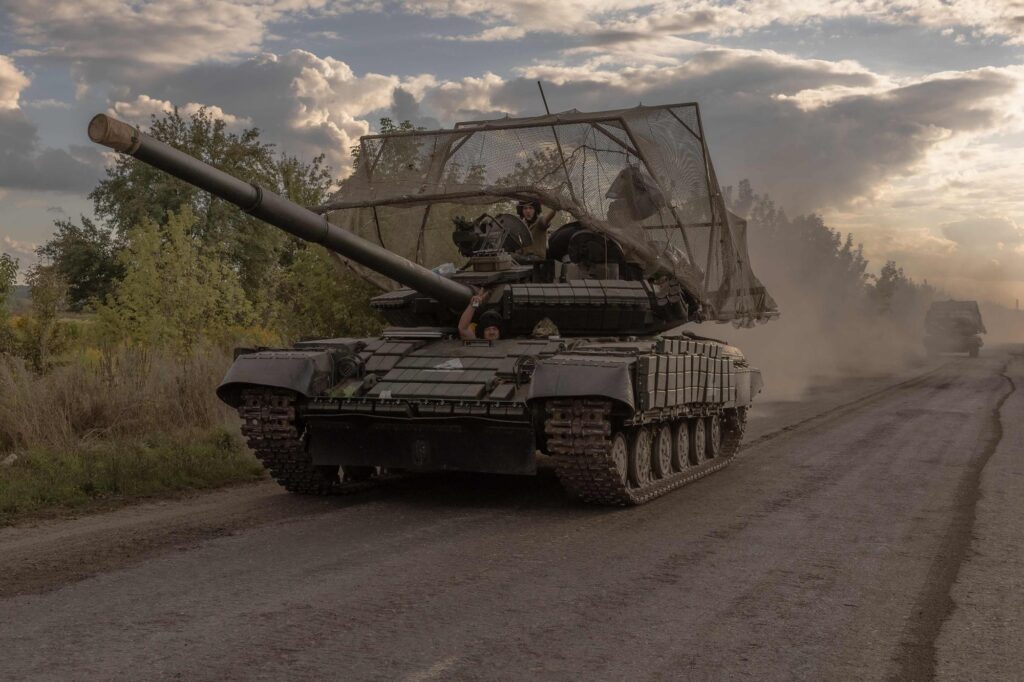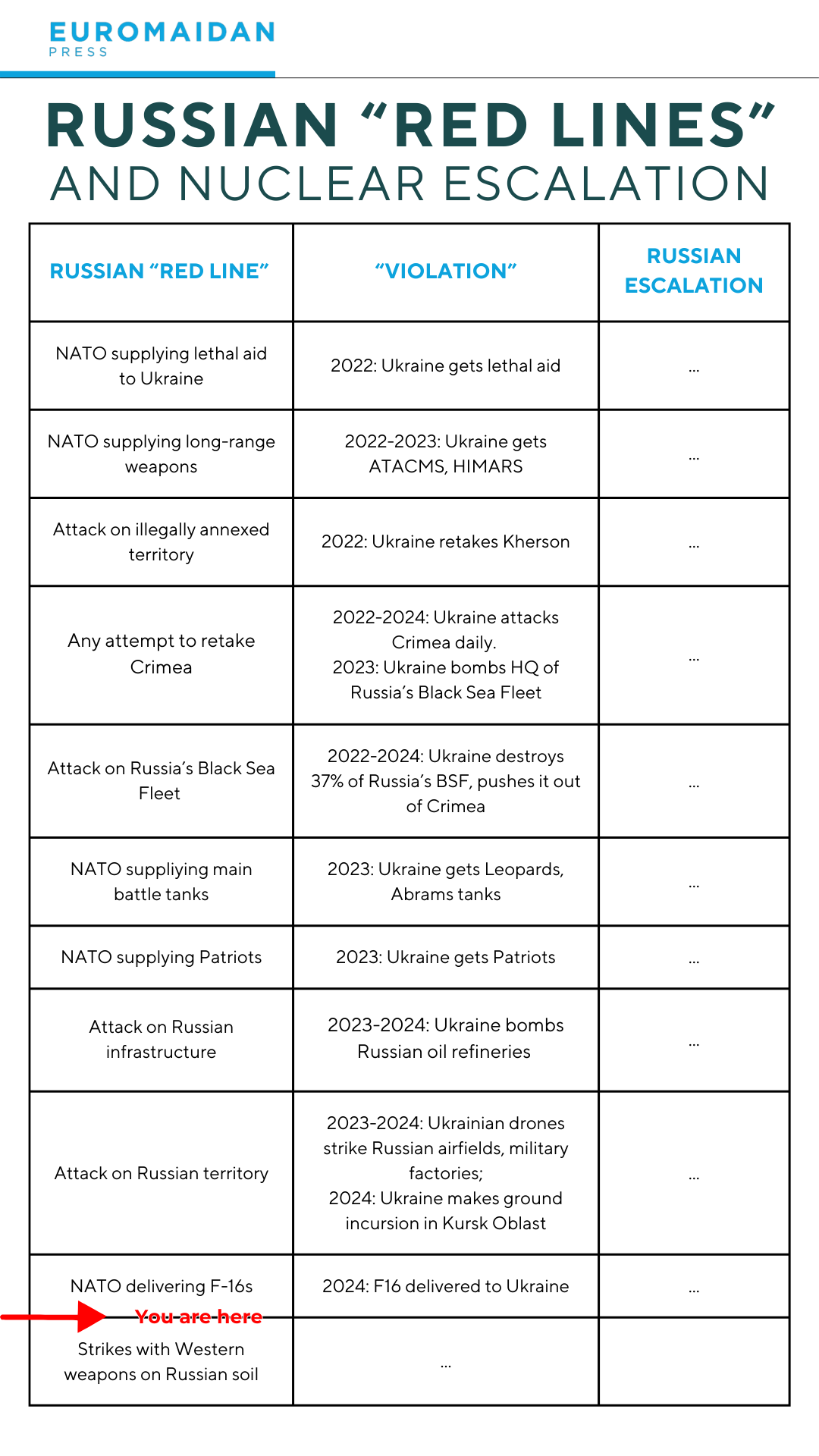The Kursk incursion logic
The Kursk Offensive helps speed up the Russian military's demise, reinvigorate Western support, and strengthen Ukrainian resolve and resilience.


On 6 August, Ukraine executed an assault against Kursk Oblast, to the surprise of both Russia and Ukraine’s international partners. In a fully transparent battlefield, it managed to secretly relocate and deploy units from at least four elite brigades and execute a surprise mechanized assault.
The new offensive comes at great risk. Attacking the Russian Federation, Ukraine risks triggering Article 4 of the CSTO Collective Security Treaty, in which “Member State shall immediately provide the [victim of aggression] with the necessary help, including military one, as well as provide support by the means at their disposal in accordance with the right to collective defense pursuant to article 51 of the UN Charter.” This would completely change the dynamic of the war.
The incursion will also challenge an already stretched Ukrainian Armed Forces, still suffering the consequences of the Russian offensive, the US temporary stop in defense aid (Oct-Apr), the slow and incremental inflow of European pledged weapons and ammunition, and Ukrainian manpower shortage.
The incursion, however, potentially also offers huge gains.
1. Force Russia to redeploy forces from the frontline
Russia is being forced to redeploy units from the Kherson, Zaporizhzhia, Pokrovsk, Kharkiv, and Kupiansk directions. Russian milbloggers allege that it is redeploying up to nine brigades (or elements of brigades) to Kursk Oblast as a response to the Ukrainian attack. A Ukrainian military observer reports, however, that Russian forces have so far redeployed 10 to 11 battalions from across the theatre to the Kursk Oblast. These battalion units are believed to lack manpower and equipment but are sufficiently strong to buy Russia time to organize a proper defense and counteroffensive.
The intensity of fighting along the frontline in the East and South has already somewhat decreased. The daily average of combat clashes has fallen from 130 during the first week of August to 105 after the start of the Kursk offensive. The number of artillery and MLRS attacks, however, remains unaffected.
2. Demonstrate Russian vulnerabilities
On 23-24 June 2023, the Wagner rebellion and its march against the Kremlin demonstrated how vulnerable Russia’s interior is to surprise attacks. Having deployed most of its regular ground forces to Ukraine and lost the entire professional army by the fall of 2022, Russia is today “fighting with mobilized soldiers, prisoners – anyone.” The Russian interior is lightly defended by conscripts and irregular forces.
The assault was executed at a moment when more experts were gradually highlighting Russian defense industrial shortcomings. Russia’s war efforts depend on its ability to repair and send Soviet legacy tanks, APCs, and artillery to the frontline. While its manpower might be close to “inexhaustible,” its stockpiles of heavy weapons are not.
The IISS believes that Russia can sustain its assault on Ukraine for about two or three years. Other experts believe Russia will reach a “critical point of depletion” in 2025 already.
The Kursk invasion helped speed up Russia’s demise and helped “shoot down” the perception that Russia could not be defeated.
3. Undermine Western argument policy of self-deterrence
Russian President Putin has repeatedly warned the West not to cross a “red line” with Russia, stressing that this would trigger an “asymmetrical, rapid and harsh” response. Russia’s red lines include:
- Undermining Russia’s external security interests (hinting at its near abroad (Ukraine and Belarus), NATO’s so-called “eastward expansion,” zone of special influence (former USSR states), the Arctic and the Baltic states);
- Russian internal security interests, including outside interference;
- Any attempt to retake Crimea;
- Any attacks against Russian territory, including its illegally annexed Crimea, Kherson, Zaporizhzhia, Donetsk, and Luhansk oblasts;
- Ukrainian NATO membership;
- Further NATO expansion of infrastructure or military foothold in Ukraine,
- The deployment of “certain offensive missile capabilities” (MK41 launch systems and Tomahawk missiles) to Ukraine;
- Western help to rebuild Ukrainian security and defence sector;
- NATO deploying its troops and weapons to Ukraine;
- Defeating Russia in Ukraine.

The list also includes the supply of lethal aid to Ukraine, arms capable of hitting Russian territory, long-range missiles, Patriot Air Defence systems, main battle tanks, F-16, MiG-29 fighters, and ATCAMS. It has threatened a strong response to a No Fly Zone over Ukraine, stressing that it would consider any third-party declaration of a no-fly zone as a direct participation in the war.
As Ukraine is “defeating Russia in Russia,” the Kursk assault is the clearest infringement of Russia’s red line until now.
The list of Ukrainian “violations” has grown long and includes Ukrainian destruction of the Black Sea Fleet; raids into Crimea; destruction of strategic bombers, early warning radars, and command and control nodes; strikes against defense industrial base, fuel and ammunition depots deep inside Russia, and more.
They are all meant to motivate NATO to act according to its late strategic concept and undermine its policy of self-deterrence.
4. Demonstrate Ukrainian resolve and capabilities
Ukraine has long realized that it cannot fight on Russian terms. For the last ten years, it has aimed for NATO interoperability, focusing on quality instead of quantity. Lacking the support needed to defeat Russia, Ukraine is also developing its national defense industry, focusing on technological innovation.
Its many military “victories” have been the result of both Ukrainian innovation and ingenuity and Western support. A huge technological transformation is taking place on the battlefield as Ukraine is determined to ensure that technology creates the basis for victory.
The Kursk invasion is a result of careful planning and preparations. Occupying around 800 km2 in days, it has potentially occupied more territory than Russia has achieved in a year at tremendous and unsustainable costs. The surprise attack demonstrates Ukrainian military capabilities and serves as a reminder of NATO’s strategic blunders in failing to invite Ukraine to join the Alliance.
5. Strengthen Western support
As I have repeatedly stressed, failure to support Ukraine and a subsequent Russian victory will have far-reaching and devastating consequences for both the US and Europe. Defence support to Ukraine is, in reality, direct support of NATO security and stability.
Despite this, Ukraine is forced to maintain a continuous and exhausting diplomatic effort trying to convince the US and Europe that it’s in their national interest to uphold their defense, and financial and humanitarian support for Ukraine.
Success breeds success. In principle, it is believed that success generates confidence, which then increases the likelihood of success in subsequent activity.
After months of persistent and slow grinding Russian advance, triggering both calls for negotiations and compromise as well as questions about the merits of continued Western support, the Kursk offensive helps reinvigorate Ukraine’s international partners. It has the same effect as Ukraine’s demonstration of bravery during the first days of the full-scale war, it’s routing of Russian forces from Kharkiv and Kherson oblast, and not least, Ukraine’s asymmetric approach to Russian sea power in the Black Sea and the subsequent destruction of more than a third of the Russian Black Sea.
6. The Psychological factor
The cognitive space has always been one of the most crucial battlefields. This is where Russia’s belief in its imperialism, fundamentalism, exceptionalism, and superiority is borne. This is where the false narrative of Western aggression is created. It is also where Russia’s disinformation about Ukraine (e.g., allegations of “Nazism” and “genocide”) is disseminated. Russia’s red lines, nuclear threats, and the risk of World War 3 have their breeding grounds in the cognitive space.
This is also where Russians and the West are made to believe that Russia cannot be defeated, and its resources are inexhaustible.
Along with all its other military success stories, the Kursk incursion serves as a wake-up call.
On one hand, it helps motivate Ukrainians, Americans, and Europeans alike. It might help reverse the downward trend in public support for Ukraine. Additionally, it undermines the Russian self-image and confidence.
It undermines the Kremlin regime. It is still making strategic blunders like its failed Blitzkrieg in 2022. It demonstrates that Russia has failed to rectify the vulnerabilities discovered during the Wagner revolt. It has ignored calls for strengthening the border as a result of past Ukrainian cross-border raids.
Conscripts are once again being sent into battle. President Putin might be forced to transfer Russian society fully to a war-time footing and further mobilize the population, increasing the risk of domestic discontent that could threaten the stability of Putin’s regime.
More embarrassing, Ukraine might be about to establish the buffer zone Russia set out to create when it opened the new front in Kharkiv on 10 May.
“We are on the offensive. The aim is to stretch the positions of the enemy, to inflict maximum losses, and to destabilize the situation in Russia as they are unable to protect their own border,” the security official said on condition of anonymity.
7. Victory
The incursion is, however, first of all, a stepping stone in Ukraine’s quest to defeat Russia on the battlefield.
According to ISW, “Russia has sought to use the threat of cross-border incursions to draw and fix Ukrainian forces along the border by concentrating rear elements in the border zone […]. Russia’s prolonged treatment of the international border area as a dormant frontline is a strategic failure of imagination.”
Russia failed to understand the risk of Ukraine using the forces defending the international border to attack Russia. Instead of assaulting well-defended, fortified positions defended by minefields, artillery, MLRS, aviation, tank traps, and anti-tank weapons, Ukraine turned and struck Russia’s soft underbelly.
Ukraine’s invasion of Kursk Oblast has allowed Ukraine to temporarily seize the battlefield initiative locally and, thereby, potentially contest Russia’s theatre-wide initiative. Once Russia starts redeploying forces to Kursk, new opportunities open.
“The current Ukrainian incursion poses significant threats to Russian military operations in Ukraine and Putin’s regime stability and demands a response.”
The Kursk Offensive helps speed up the Russian military’s demise, reinvigorate Western support, and strengthen Ukrainian resolve and resilience.
Ukraine is demonstrating that quality beats quality. Technology, innovation, and ingenuity – will help secure David’s victory over Goliath.
Editor’s note. The opinions expressed in our Opinion section belong to their authors. Euromaidan Press’ editorial team may or may not share them.
Submit an opinion to Euromaidan Press
Related:
- Ukraine’s surprise Kursk incursion: lifting spirits or stretching resources?
- Kursk incursion: experts debate Ukraine’s objectives as Kyiv consolidates blitz gains
- Why Russia clings to gas lifeline amid Ukraine’s Kursk incursion


